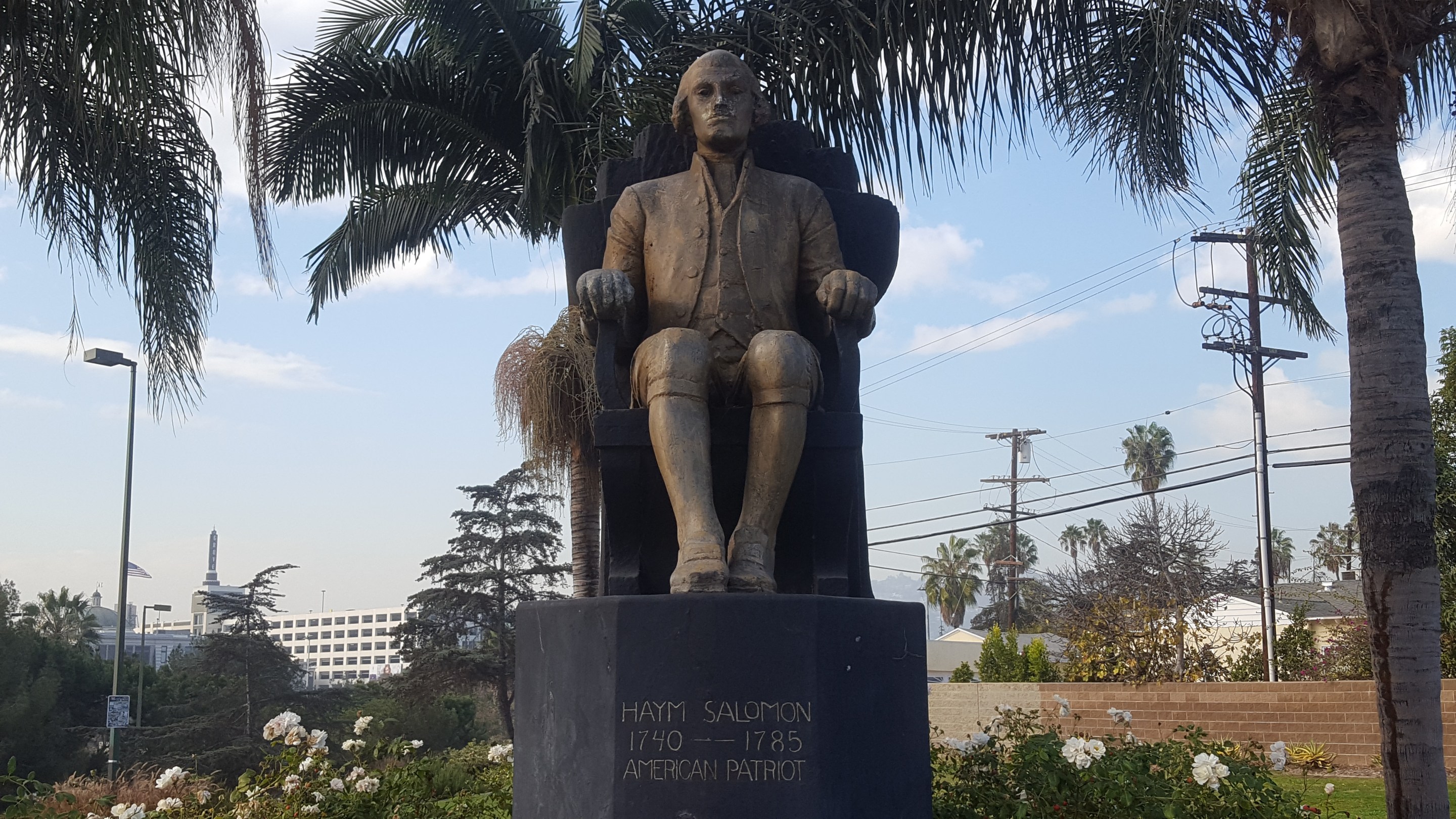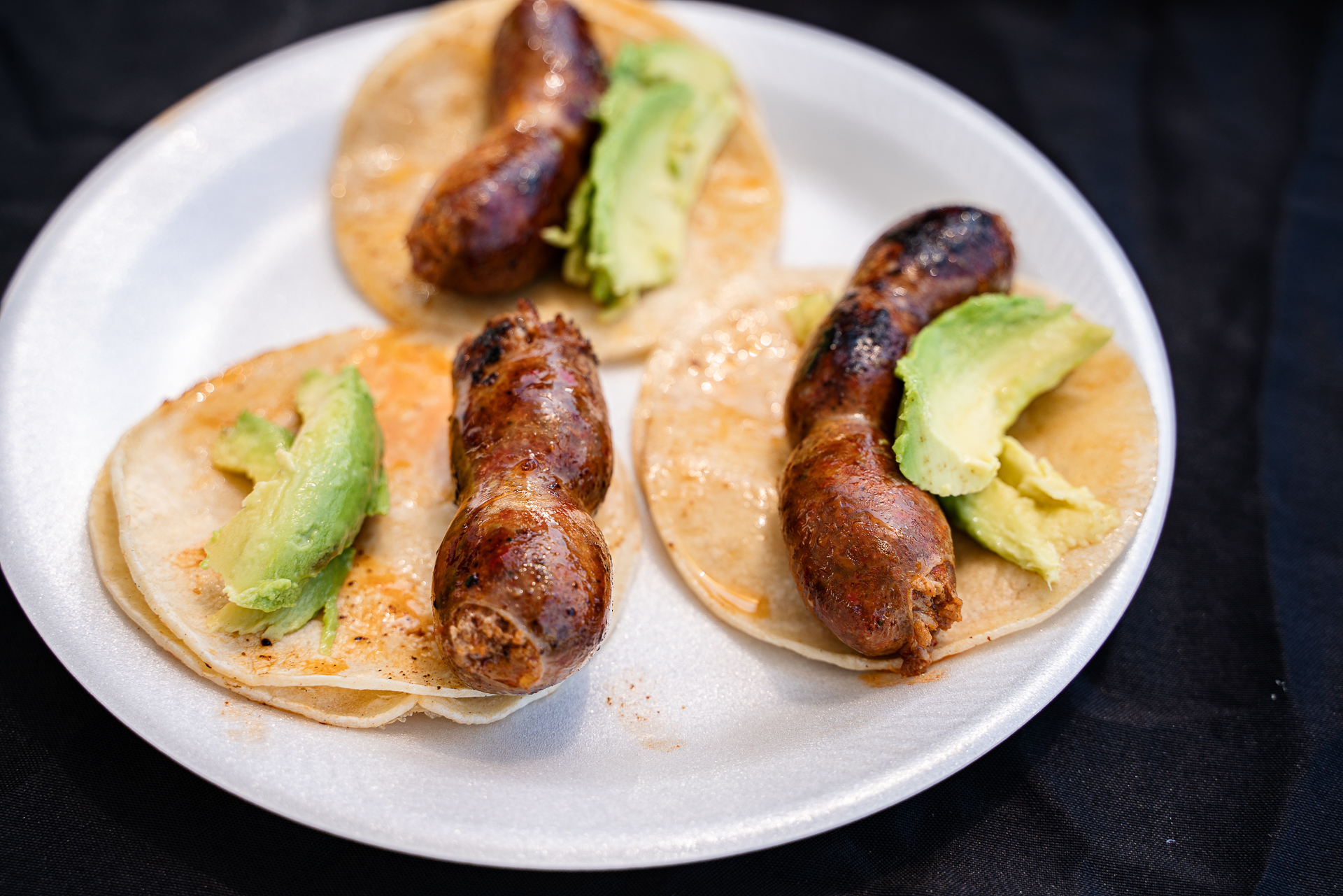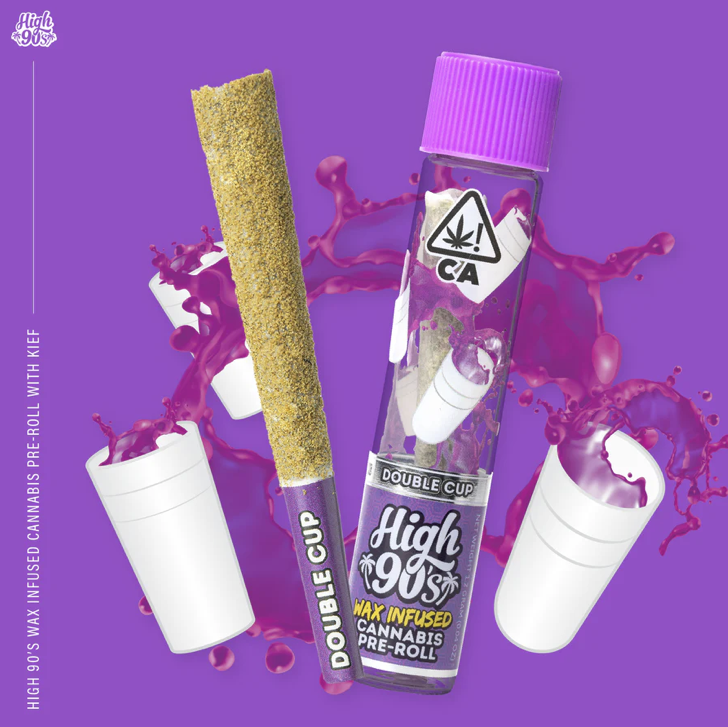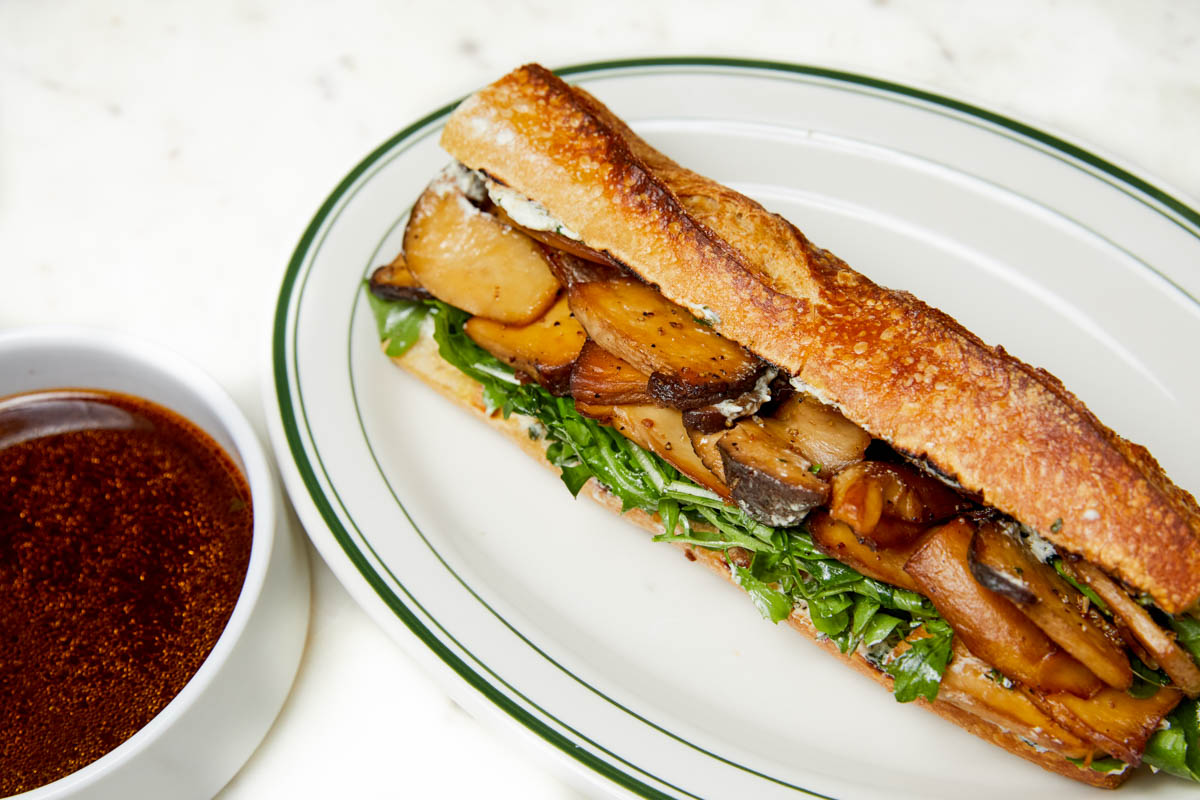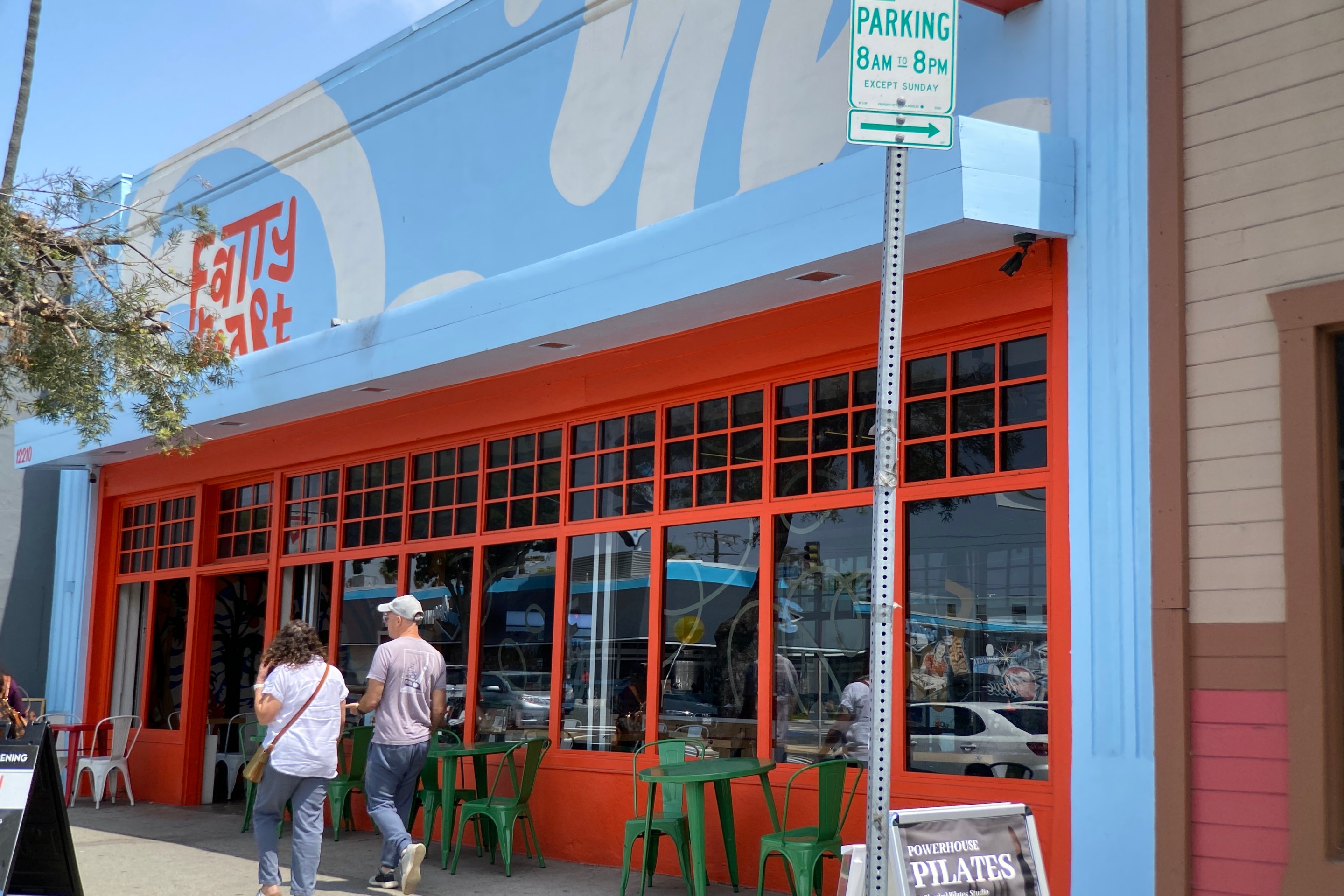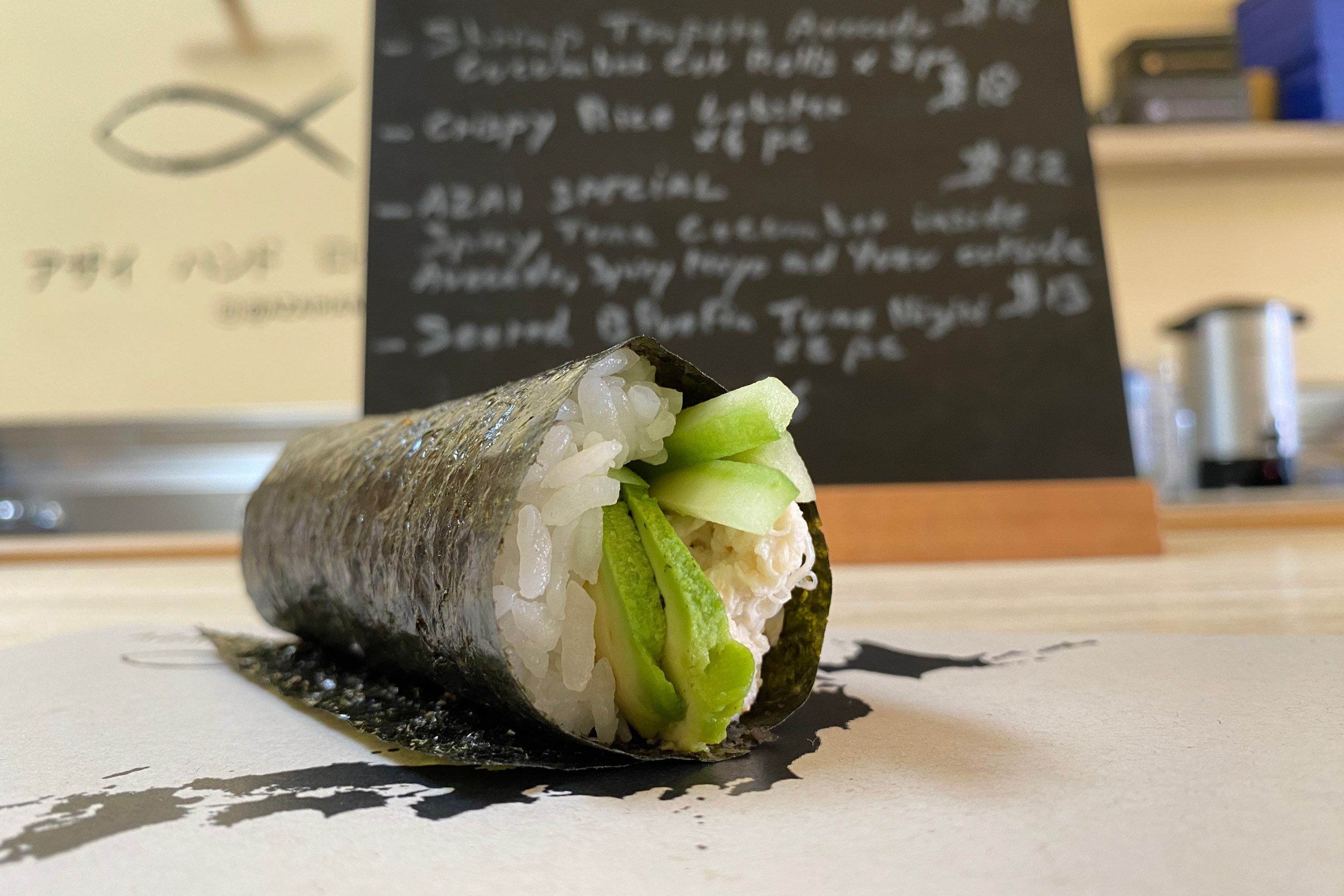One day, I found myself driving west on 3rd Street by Pan Pacific Park and as I waited on a red light at Gardner Street, in front of a 7-11, I noticed a statue of a seated figure in a 1776-style powdered wig, alone on a pedestal across the intersection.
“Who is that?” I wondered, expecting it to be a famous Founding Father.
So I parked, investigated, and discovered that it was a monument to Haym Salomon, an obscure but important Jewish American figure during the American Revolution. Even weirder, the statue has done a bit of traveling around Los Angeles since it was first erected 74 years ago today, on January 6, 1944. Indeed, the statue has moved curiously westward in more or less the same historical trail as the city’s Jewish community in the 20th Century.
‘Send for Haym Salomon.’
But who was Haym Salomon, and how did a statue honoring him wind up in L.A.?
Salomon was born in Poland in 1740 and emigrated to New York City at the age of 35, where he established himself as a financial broker for overseas trades. In the early days of the Revolution, Salomon was twice arrested by the British under the accusation that he was a spy, despite not then being a part of the independence cause.
He was sentenced to death, but escaped from jail, and fled with his family to Philadelphia.
In Philly, Salomon joined the war effort, and between 1781 to 1784 he raised the modern equivalent of about $1 million through deals with foreign and domestic allies for the Revolution. His reputation was so well known that when General George Washington desperately needed funds for the decisive Battle of Yorktown, he gave a simple order: “Send for Haym Salomon.”
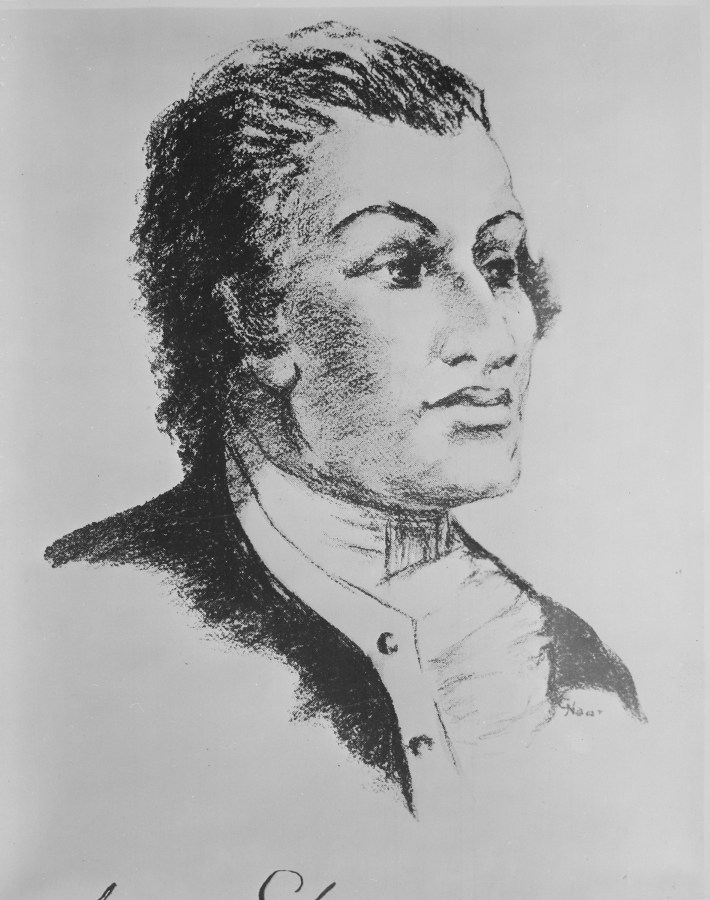
After the war, Salomon continued to support the new U.S. government, using his own fortune to buy some of the national debt. Despite his role in the Revolution, a Pennsylvania law that banned non-Christians from holding state office kept him from taking a leadership role in the nation whose birth he helped fund.
Tragically, Salomon’s investment in the U.S. was never repaid, and he died nearly penniless on January 6 (incidentally), in 1785. He was just 44 years old.
So, what’s a statue of an obscure Revolutionary War hero doing in Pan Pacific Park?
Well, the funny thing is this wasn’t the statue’s first home in Los Angeles, or even its second. In 1943, as part of the World War II war bond effort, an organization of Jewish Americans called the Haym Salomon Day Committee arranged for the erecting of a statue of Salomon as the centerpiece to a $3-million Victory Bond drive. Hollenbeck Park in Boyle Heights, then the heart of L.A.’s Jewish community, was chosen as the statue’s home.
On Jan. 6, 1944, Mayor Fletcher Bowron dedicated the statue and officially declared Haym Salomon Day in Los Angeles. The 12-foot tall and 13-ton concrete artwork, carved by sculptor Robert Paine (a descendent of Thomas Paine), was feted with a four hour celebration featuring a military parade and prominent Angelenos.
Warner Brothers even donated a copy of their 1939 Academy Award-winning two-reel short film Sons Of Liberty, starring Claude Rains as Salomon, to be sealed in the base of the statue! However, it remains unknown if the film canisters remains inside the statue’s base.
As time went by, the demographics of Boyle Heights began to change. The Jewish community began moving further west, notably marked by Al Langer opening his namesake deli in the Westlake neighborhood in 1947, and the Canter family moving their deli from Boyle Heights to Fairfax Ave in 1948.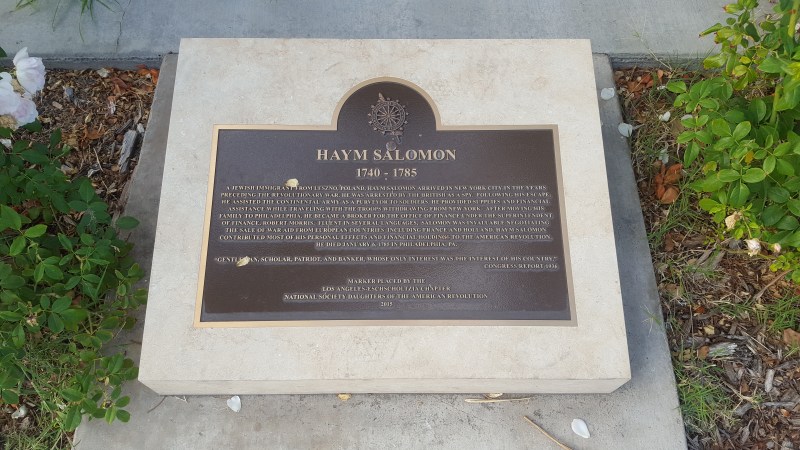
So, in 1951, the monument was carried via flatbed truck to MacArthur Park, where it was rededicated on April 8, with a two-hour ceremony featuring, again, Mayor Bowron. However, the statue suffered some damage and vandalism after the move, and it was repaired and re-rededicated in 1958.
And in the decades after the Salomon statue moved to MacArthur Park, the Jewish population in Westlake shrunk significantly as well.
In 1984, with funding from the Jewish War Veterans, the Salomon statue was moved to the community center at the West Wilshire Recreation Center, at 1st Street and Gardner Street. Mayor Tom Bradley oversaw a brief rededication ceremony.
However, in the early 2000s, the park was revamped, remodeled and renamed Pan Pacific Park. The Salomon statue was moved once more, down the block to its current location, in 2005.
Following the 2005 move, the statue was rededicated yet again in 2008 by Mayor Antonio Villaraigosa and City Councilman Tom LaBonge. A plaque that honored the four parks the statue has lived in was added to its base. 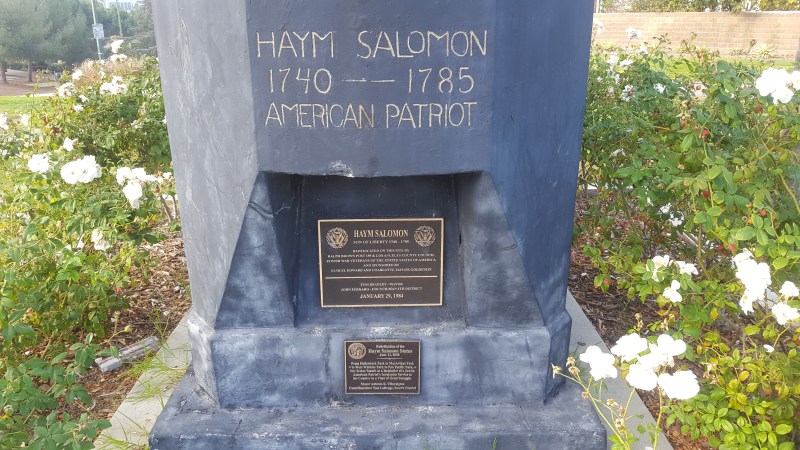
Of course, there’s no guarantee that Salomon will stay put. As LaBonge told the L.A. Times following its 2005 move, “I’ve joked with my Jewish friends that one day that statue will be out in Tarzana.”
Nowadays, the statue is not well known. I recently visited the Salomon sculpture again, and asked passersby if they knew anything about the man. Most had never heard of him, or paid little attention to this historic sculpture.
“I walk by it every day, but I know nothing about it,” said Jeffrey Kaufman.
Unsurprisingly, I wasn’t alone in my initial assumption that this was a statue of someone better known. In fact, as I stood admiring the statue, a woman named Fanta McAdoo was walking towards her job at the Grove and exclaimed: “What? I thought that was George Washington! Who is Haym Salomon?”
Exactly.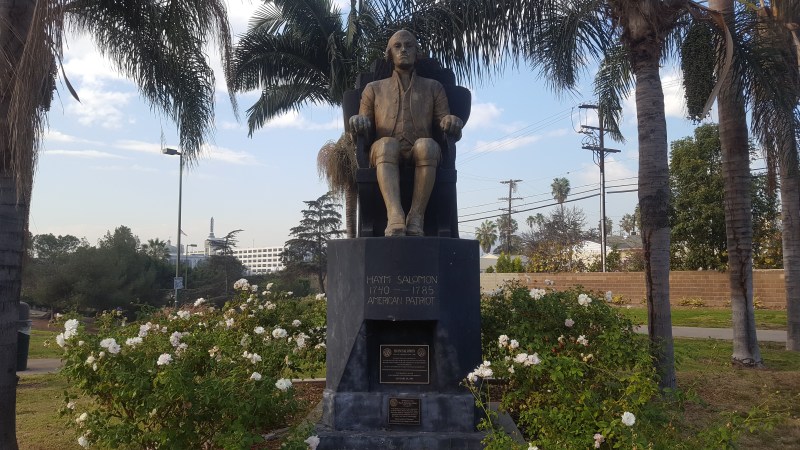
Hopefully, in their post-Hamilton daze, more Angelenos will stop by the statue and pay tribute to this under-heralded American hero. In this climate of rising hate and divisiveness, it's important to remember on this unofficial Haym Salomon Day that the United States of America was founded not just by white Christians, but by a diverse group men and women of many backgrounds.
While L.A. may not have tributes to the black companies of the 1st Rhode Island Regiment, or Boston Tea Party organizer Sarah Bradlee Fulton, to name a few other under-heralded heroes, the statue of Haym Salomon in Los Angeles shines a worthwhile light on one Jew’s contribution to this nation’s birth.
